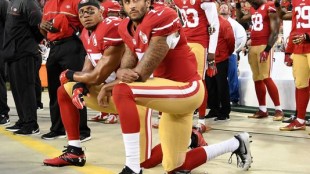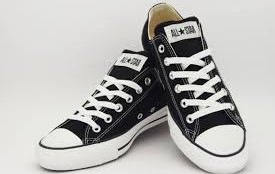The Journal of Law and Public Policy is….

By Arielle Padover Commonplace three-dimensional (3D) printing may seem far off; however, it seems to be arriving quicker than some might have anticipated, particularly in the fashion industry. According to David Sheffler, a researcher and lecturer at the University of Virginia School of Engineering and Applied Science, “3D printing is where PCs were in the late ‘70s and early ‘80s.” In fashion specifically, Joris Debo, the creative director of Materialise, notes that while it is “a slow process of adoption,” 3D printing in fashion has changed “quite rapidly” in the past few years. While we probably have quite a while before people can say “I’ll be ready as soon as I print my shoes,” it is extremely important that lawmakers proactively address the legal issues that will inevitably arise due an increase in 3D printing. 3D printing allows people to turn a digital file into a three-dimensional object by successively layering material until the object is formed. 3D printing has been gradually making its way into the mainstream, with companies like UPS and Staples offering 3D printing services. It will likely continue to become an even more familiar process as 3D printers become increasingly more affordable and, therefore, more accessible
[read more]

By Lee Henderson Colin Kaepernick’s decision to take a knee during the playing of the Star-Spangled Banner has sparked much conversation about the customs and legal rules expected during the National Anthem. While some take offense to the issues the back-up quarterback is kneeling for, most critics are offended by what they perceive as a disregard for the military members who fought and died for the flag (despite Kaepernick’s denial.) Since the Anthem’s first use in the early 1900’s, standing during it’s playing was a contentious issue. Following Hoover’s declaration that the Star-Spangled Banner be the country’s official national anthem in 1931, a poll revealed that public opinion was split as to proper behavior during the Anthem, half of respondents saying mandated standing was overly authoritarian. Congress weighed in on the issue when it passed 36 U.S.C. § 301, also known as the National Anthem Statute, which said that people should “face the flag and stand at attention with their right hand over their heart.” Although this still stands as law, no criminal penalties were ever prescribed in case of violation of the provisions. The Supreme Court also took its turn commenting on the status of these customs as they
[read more]

By: Danny Ho Mass government surveillance is a unique issue of concern in our increasingly technological era. Mass surveillance refers to the government’s indiscriminate monitoring of a large group of people through collection of large sets of data such as telephone records, emails, and internet activity. This issue gained public attention in 2013 when Edward Snowden, a former CIA (Central Intelligence Agency) employee and NSA (National Security Agency) contractor, leaked confidential information about the NSA’s global surveillance programs. The Snowden disclosures revealed alarming evidence of government intrusion into the private lives of individuals. Among the revelations was the clandestine government program (code-named PRISM) that allowed the NSA to gain direct access to individual Google and Yahoo accounts with court approval. The 2013 Snowden disclosures forced our government to engage with privacy advocates and the public at large with regards to the implications of its surveillance policies. However, a string of recent global and domestic terrorist attacks – from San Bernardino to Paris – renewed the push for government surveillance programs to respond to fears that terrorists will otherwise avoid government detection. Knowledge of past invasive government surveillance programs and national security fears from recent terrorist attacks have created a complex
[read more]

By: Francis Cullo Over the summer, the Ninth Circuit handed down an opinion in United States v. Nosal that generated several fear-mongering headlines. At first blush, the Ninth Circuit seemed to outlaw a common digital practice—password sharing. But are you really committing a federal crime if you use someone else’s password when you Netflix and chill? The short answer is no. So what produced this flurry of headlines? The Ninth Circuit wrestles with password sharing. In United States v. Nosal the Ninth Circuit issued an opinion finding that an employee acted “without authorization” when he requested and used a former co-worker’s login despite having that co-worker’s permission. David Nosal was charged under the federal Computer Fraud and Abuse Act (CFAA). The CFAA is an anti-hacking statute. It creates a private right to action, allowing both private individuals and businesses to sue and recover damages when someone “intentionally accesses a computer without authorization or exceeds authorized access.” In 2004, Nosal was a big-wig in Silicon Valley when he left his employer to start a rival executive recruiting company. Two other employees from his former employer joined him a year later at his new firm. After joining Nosal’s new company these employees
[read more]

By Arielle Padover If you’re among the two-thirds of Americans who believe that the government regulates the chemicals that go into your personal care products, think again. According to the Environmental Working Group, American women use an average of twelve personal care products that contain 168 different chemicals every day, while American men use an average of six personal care products that contain 85 different chemicals. These chemicals are currently regulated by the Food, Drug, and Cosmetics Act, which has not been substantially updated since it was introduced in 1938, almost 80 years ago. The 1938 legislation gives the Food and Drug Administration (FDA) very limited control over the chemicals that go into personal care products. According to the FDA’s website, the “FDA does not have legal authority to approve cosmetic products and ingredients (other than color additives) before they go on the market” under the existing law. The FDA cannot mandate testing of ingredients or recall products, and cosmetic companies do not have to register with the FDA, submit ingredient lists, or report adverse events. Currently, only 11 toxic ingredients are specifically banned by statute from use in beauty products in the United States, two of which are mercury
[read more]

By: Karli Cozen The Court of Arbitration for Sport (CAS) has played an active role in the international sporting arena since its inception in 1984. CAS is an independent quasi-judicial body with arbitral jurisdiction to resolve both commercial and disciplinary sport-related disputes. It was developed to provide an outlet to resolve disputes in response to the growing number of international sporting disputes. CAS has been implemented by the International Olympic Committee (IOC) and many International sporting federations as the chosen method of recourse in dispute resolution. Most recently, in Maria Sharapova v. International Tennis Federation, CAS reduced professional tennis player Maria Sharapova’s two-year ban from professional competition to 15 months of ineligibility on an appeal from a ruling of the International Tennis Federation’s (ITF) appointed independent tribunal. Sharapova is a Russian-born tennis superstar with an impressive resume that includes formerly holding the number one rank in the world and five grand slam championships. In January 2016, at the Australian Open, Sharapova tested positive for taking Melodonium. Melodonium is a drug that was added to the list of banned substances in the World Anti-Doping Code as of January 1, 2016. Sharapova took Melodonium for ten years prior due to a magnesium
[read more]

By Daniel Sperling Is the minimum wage high enough today? Increasing the minimum wage could decrease poverty, benefit company productivity, and boost the economy. But is increasing the minimum wage really that simple? In 1938, the United States Congress passed 29 U.S. Code § 201, otherwise known as the Fair Labor Standards Act (FLSA), which effectively shaped the history of United States labor law and regulation. The legislation introduced many characteristics of the work force that still exist today, including the minimum wage requirement. The minimum wage is the base level that an employer can pay its employees as regulated on a federal and state/local government level. In 2007, the Fair Minimum Wage Act of 2007 was passed which gradually increased the federal minimum wage from $5.15 to $7.25 over two years. Currently, twenty-nine states have minimum wage legislation that ensures wages hirer than the federal standard, fourteen states have minimum wage legislation equivalent to the federal government, and five states have no minimum wage legislation. Two states, Wyoming in Georgia, have minimum wage laws that actually guarantee an amount less than the federal government, meaning that employees not covered under the FLSA are subject to the lower wage, which
[read more]

By Danielle Bernstein Don’t worry about paying sales tax the next time you go to CVS to pick up a prescription, buy some condoms, or stock up on sunscreen. These items are exempt from sales tax because they are considered medical necessities that are “intended for use, internally or externally, in the diagnosis, cure, mitigation, treatment, or prevention of illnesses or diseases in human beings.” But go to CVS to pick up a package of tampons? Time to pay up. Under the current tax code tampons and pads are not medical necessities, instead they are classified as items “used to maintain cleanliness.” This designation places tampons and pads in the same category as cosmetics like lipstick and shampoo. Interestingly, dandruff shampoo made the cut for a “necessity” and is not taxed. Any woman who has ever had to ask a stranger for an emergency tampon in the bathroom (and most of us have) knows this designation is incorrect. Tampons and pads are not luxury items. As one woman put it, “[They are] one of the most important things for a woman to have available.” And insofar as there is a spectrum of “necessity,” tampons are certainly more necessary that treating
[read more]

By Sam Gamer This past summer, the total student loan debt owed by Americans crested up to $1.2 trillion. For those staring down their own slices of that staggering sum, the options available to pay it off can seem daunting. A lucky few of these former students might be able to find high-paying jobs that enable them to easily handle their debts. For most, however, the path likely includes some combination of sacrifice, payment plans, multiple jobs, and refinancing. And for those who have an appetite for uphill battles, an additional tool might make sense: bankruptcy. The discharge of one’s debts is a hallmark of the consumer bankruptcy system. Whether filing for chapter 7 or chapter 13, the debtor emerges from the process with his debts forgiven. Well, most of them. Contained within section 523 of the federal bankruptcy code is a list of certain debts that, even in a bankruptcy context, a borrower can’t escape from. Student loans are on this forbidden list. Specifically, the law says that, unless the former student can prove that keeping the loans will impose an “undue hardship” on him or her, the loans will not be discharged even after a bankruptcy filing.
[read more]

By Max Scharf Converse is currently in the midst of litigation which seems to completely depend on the status of the aesthetic functionality doctrine. When consumers think of Converse, they often think of their Converse All Star sneakers (as seen below), also known as “Chuck Taylors.” In October 2014, Converse filed suit against Wal-Mart (and dozens of other companies) claiming these companies were selling knock-off Chuck Taylors. For the sake of brevity, this post will mainly focus on Converse’s claims against Wal-Mart. Converse is claiming trade dress infringement on the grounds that Wal-Mart’s “Stinson Oxford” shoes are likely to cause consumer confusion. Converse claims Wal-Mart is unlawfully reproducing its “midsole trademark” which consists of a particular design, including stripes, a toe cap, and a toe bumper. Indeed, in 2013, Converse registered this design with the Patent and Trademark Office. Background on Trade Dress Protection In Two Pesos, the Supreme Court held that the Lanham Act protects trade dress, which includes the “shape, color or color combinations, texture, [and] graphics” of a product. Trade dress, in the form of a product design, can only be registered and protected, under the Lanham Act, if it acquires secondary meaning. Secondary
[read more]










